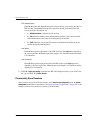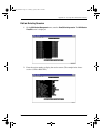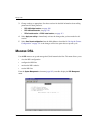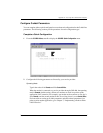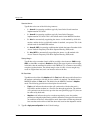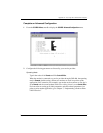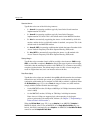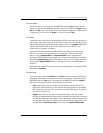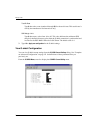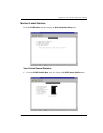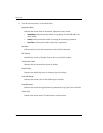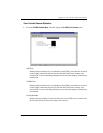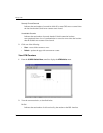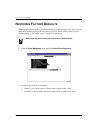
Appendix A: Accessing the Command-Line Interface
MM701G and MM702G User Manual 123
Wire Pair Mode
Type 5 then select a wire mode. For the MM701G modem, Single mode is the only
setting available. For the MM702G modem, you can select either
1 for Single or 2 for
Dual mode; Dual mode is the default. Wire mode indicates whether the G.shdsl modem
is operating in a two-wire mode (
Single) or a four-wire mode (Dual).
PSD Mode
Type 6 then select which Power Spectral Density (PSD) which plots the variations of
signal power with signal frequency for the G.shdsl transmission between the modem
and the DSLAM or the modem and another modem. Select
1 for Symmetric PSD which
indicates that the PSD mask for both sides of the transmission (the CO- and
remote-side) are the same (symmetric).
Asymmetric PSD indicates that the PSD mask for both sides of the transmission
(the CO- and remote-side) are not the same (asymmetric). There are two unique
numeric values (
AsymmetricRate1 and AsymmetricRate2) used to determine the
asymmetric PSD mask based on the Annex A or Annex B standard that you selected.
Select
2 for AsymmetricRate1 which is 784 kbps for Annex A and 2312 kbps for Annex
B. Select
3 for AsymmetricRate2 which is 1552 kbps for Annex A and 2056 kbps for
Annex B.
Both ends of the connection must be set for the same Symmetric or Asymmetric PSD.
The default is
Symmetric.
Bit Rate Mode
Type 7 then select either 1 for Adaptive or 2 for Fixed mode. Bit rate mode indicates how
the modem synchronizes with the device to which it is attached. The default for the
MM702G modem is
Fixed mode. The default for the MM701G modem is Adaptive
mode. The following provides more description for each mode.
•
Fixed mode indicates that the modem will synchronize with the other end (a
DSLAM or another modem) at a fixed bit rate through negotiation. The modem
will synchronize at the best rate, up to the data rate specified (page 122), that can
be achieved by both ends.
•
Adaptive mode indicates that prior to modem negotiating a rate, the modem
performs an adaptation phase during which it determines a best possible rate based
on conditions of the line. After adaptive mode, the modem will then negotiate the
best rate that can be achieved with the other end, based on the adaptation results.
An MM702G in
Dual Wire Pair Mode cannot be used in Adaptive Bit Rate Mode.




